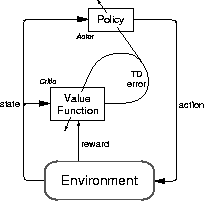
Figure 6.15: The Actor-Critic Architecture.



Actor-critic methods are TD methods that have a separate memory structure to explicitly represent the policy independent of the value function. The policy structure is known as the actor, because it is used to select actions, and the estimated value function is known as the critic, because it criticizes the actions made by the actor. Learning is always on-policy: the critic must learn about and critique whatever policy is currently being followed by the actor. The critique takes the form of a TD error. This scalar signal is the sole output of the critic and drives all learning in both actor and critic, as suggested by Figure 6.15.

Figure 6.15: The Actor-Critic Architecture.
Actor-critic methods are the natural extension of the idea of reinforcement-comparison methods (Section ) to TD learning and to the full reinforcement-learning problem. Typically, the critic is a state-value function. After each action selection, the critic evaluates the new state to determine whether things have gone better or worse than expected. That evaluation is the TD error:

where V is the current value function implemented by the critic. This TD error
can be used to evaluate the action just selected, the action  taken in
state
taken in
state  . If the TD error is positive, it suggests that the tendency to
select
. If the TD error is positive, it suggests that the tendency to
select  should be strengthened for the future, whereas if the TD error is
negative it suggests the tendency should be weakened. Suppose actions are
generated by the Gibbs softmax method:
should be strengthened for the future, whereas if the TD error is
negative it suggests the tendency should be weakened. Suppose actions are
generated by the Gibbs softmax method:

where the  are the values at time t of the modifiable policy
parameters of the actor, indicating the tendency to select ( preference
for) each action a when in each state s. Then the strengthening or
weakening described above can be
implemented simply by incrementing or decrementing
are the values at time t of the modifiable policy
parameters of the actor, indicating the tendency to select ( preference
for) each action a when in each state s. Then the strengthening or
weakening described above can be
implemented simply by incrementing or decrementing  , e.g., by
, e.g., by

where  is another positive step-size parameter.
is another positive step-size parameter.
This is just one example of an actor-critic method. Other variations select the
actions in different ways, or use eligibility traces like those described in the
next chapter. Another common dimension of variation, just as in
reinforcement-comparison methods, is to include additional factors varying the
amount of credit assigned to the action taken,  . For example, one of the
most common such factors is inversely related to the probability of selecting
. For example, one of the
most common such factors is inversely related to the probability of selecting
 , resulting in the update rule:
, resulting in the update rule:

These issues were explored early on, primarily for the immediate reward case (Williams, 1992; Sutton, 1984) and have not been brought fully up to date.
Many of the earliest reinforcement learning systems that used TD methods were actor-critic methods (Witten, 1977; Barto, Sutton and Anderson, 1983). Since then, more attention has been devoted to methods than learn action-value functions and determine a policy exclusively from the estimated values (such as Sarsa and Q-learning). This divergence may be just historical accident. For example, one could imagine intermediate architectures in which one learns an action-value function and yet still maintains an independent policy. In any event, actor-critic methods are likely to remain of current interest because of two significant apparent advantages:
In addition, the separate actor in actor-critic methods make them more appealing to many people as psychological and biological models. In some cases it may also make it easier to impose domain-specific constraints on the set of allowed policies.


